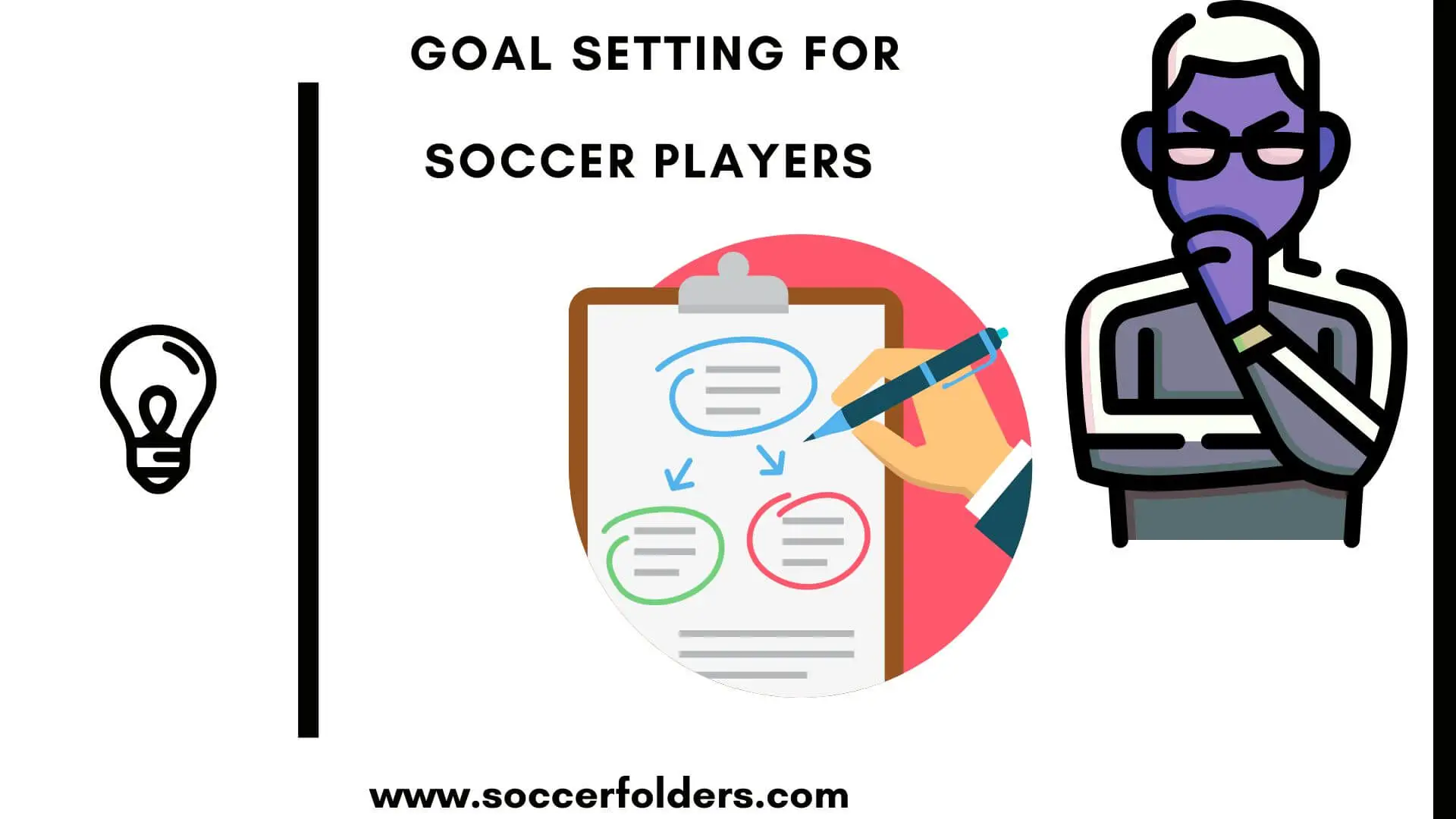Soccer is a sport that requires discipline, hard work, and a clear understanding of one’s goals. To perform at the highest level, soccer players need to have a well-defined plan for success.
This plan should include a set of specific, measurable, and achievable goals that can be used as a roadmap for training and performance.
In this article, we will explore the importance of goal setting for soccer players and provide tips for creating effective goals.
Here are 10 things to know about goal setting for soccer players.
- Why is Goal Setting for Soccer Players Important?
- Examples of Individual Goals For Soccer Players
- Tips for Creating Effective Goals
- Soccer Team Goals Examples
- The Impact of Goal Setting on Team Dynamics and Success
- The Importance of Setting both Personal and Team Goals
- What are Examples of SMART Goals for Soccer Players?
- Techniques for Setting and Prioritizing Goals, such as SMART Goals and the Eisenhower Matrix
- The Impact of Goal Setting on Mental and Physical Performance
- Youth Soccer Team Goals
- Wrap Up
Why is Goal Setting for Soccer Players Important?
- Helps focus effort and attention on what is most important
- Provides a sense of direction and purpose
- Increases motivation and accountability
- Facilitates progress tracking and evaluation
Examples of Individual Goals For Soccer Players
1. Performance Goals
These are specific, measurable goals that relate to improving skills and techniques.

Examples include: “I want to score 10 goals this season”, “I want to improve my dribbling speed by 10%”; “I want to make 100 passes per game”.
2. Process Goals
These are goals that focus on the process of training and preparation.
Examples include: “I want to attend all practices and games”, “I want to spend 30 minutes a day on ball handling drills”; “I want to eat a balanced diet to improve my energy levels”.
3. Outcome Goals
These are goals that focus on the results of the competition.

Examples include: “I want to win the league championship”, “I want to be selected for the all-star team”; “I want to make it to the semi-finals of the state tournament”.
==>>You can also read: Soccer visualization techniques
Tips for Creating Effective Goals
- Make sure goals are specific and measurable
- Make sure goals are realistic and achievable
- Set both short-term and long-term goals
- Review and adjust goals regularly to reflect progress and changing circumstances
- Write down goals and keep them visible for motivation and accountability
Soccer Team Goals Examples
Soccer team goals are objectives that are shared and pursued by the entire squad.

Team goals help create a common purpose and direction, and align the efforts of all players towards a shared objective.
Here are a few soccer team goals examples:
- “Win the league championship.”
- “Advance to the semi-finals of the tournament.”
- “Improve team defense and reduce the number of goals conceded per game.”
- “Increase team morale and cohesiveness through regular team bonding activities.”
- “Develop the skills of younger players by providing opportunities for playing time and regular training sessions.”
By setting soccer team goals for the season, coaches and players can work together to identify areas of strength and weakness and create a training plan that helps the team reach their full potential.
The process of setting and working towards team goals can also help improve team dynamics, build trust and teamwork, and foster a sense of unity and purpose among all players.
The Impact of Goal Setting on Team Dynamics and Success
Goal setting can have a significant impact on team dynamics and success, as it helps align individual and team objectives and creates a shared sense of purpose and direction.
When everyone on the team has clearly defined goals, they can work together more effectively, as each player knows what is expected of them and what they are working towards.
This can lead to increased collaboration, communication, and accountability, as well as a greater sense of pride and ownership in the team’s collective achievements.
By setting team goals, coaches and players can also work together to identify areas of strength and weakness and create a training plan that helps the team reach their full potential.
By focusing on shared goals, teams can create a positive and supportive environment that encourages players to push themselves, take risks, and strive for excellence.
The Importance of Setting both Personal and Team Goals
Setting both personal and team goals is important for the success of both individual players and the team as a whole.
Personal goals provide a sense of direction and purpose for individual players and help them stay focused and motivated.
They also allow players to track their progress, identify areas for improvement, and celebrate their achievements.
On the other hand, team goals provide a common purpose and direction for the entire squad, and help everyone work together towards a shared objective.
So, by setting both personal and team goals, players can ensure they are making progress towards their long-term objectives, while also contributing to the success of the team.
The combination of individual and team goals helps create a balanced and supportive environment, where players can grow and develop both individually and collectively.
What are Examples of SMART Goals for Soccer Players?
SMART goals for soccer players are Specific, Measurable, Achievable, Relevant, and Time-bound objectives.
Here are a few examples:
- “Increase the number of successful passes per game from 50 to 60, by the end of the season.”
- “Reduce the number of fouls committed per game from 3 to 2, within the next 6 months.”
- “Improve dribbling speed by 20% over the next 4 months through daily drills and practice sessions.”
- “Score 5 goals per season, starting from the next tournament.”
- “Reduce the number of injuries sustained while playing, by increasing flexibility and strength through weekly yoga and weight training sessions.”
Techniques for Setting and Prioritizing Goals, such as SMART Goals and the Eisenhower Matrix
There are several techniques for setting and prioritizing goals, two of which are the SMART goal framework and the Eisenhower Matrix.
SMART stands for Specific, Measurable, Achievable, Relevant, and Time-bound, and is a widely used approach for creating well-defined goals.
The Eisenhower Matrix, on the other hand, is a time management tool that helps prioritize tasks by categorizing them into four quadrants based on urgency and importance.
By combining these techniques, soccer players can create a prioritized set of SMART goals that are specific, achievable, and aligned with their overall objectives.
By focusing on the most important goals first, players can allocate their time and resources more effectively, increase their chances of success, and ensure they are making steady progress towards their long-term objectives.
These techniques can help soccer players stay focused, motivated, and on track towards achieving their goals.
The Impact of Goal Setting on Mental and Physical Performance
The impact of goal setting on mental and physical performance can be significant, as it helps soccer players stay focused, motivated, and on track towards achieving their objectives.
When players have clearly defined goals, they can direct their energy and attention towards what is most important, which can help improve their overall performance.
The process of setting goals can also help players develop mental toughness and resilience, as they learn to overcome challenges and stay motivated in the face of adversity.
On a physical level, goal setting can help players stay motivated to train and practice, which can lead to improved fitness, technique, and overall performance.
The impact of goal setting on mental and physical performance can be substantial, helping players reach new levels of achievement both on and off the field.
Youth Soccer Team Goals
Youth soccer teams also benefit from having clear and well-defined goals.
Team goals for youth soccer players help instil a sense of purpose, direction, and motivation and provide an opportunity for young players to develop important skills such as teamwork, communication, and goal-setting.
Here are a few examples of youth soccer team goals:
- “Develop basic soccer skills through regular drills and practices.”
- “Encourage good sportsmanship and fair play in all games.”
- “Increase participation and involvement of all players in games.”
- “Build confidence and self-esteem of young players through positive reinforcement and opportunities to play.”
- “Foster a love of the sport and a sense of community among players, coaches, and families.”
By setting youth soccer team goals, coaches and players can work together to create a positive and supportive learning environment, and help young players develop important skills and values that will serve them well both on and off the field.
Wrap Up
Goal setting is a critical component of success for soccer players.
By setting specific, measurable, and achievable goals, you can focus your efforts and achieve your full potential on the field.
Whether you are a seasoned veteran or a beginner, taking the time to set and track your goals can help you reach new heights in your soccer journey.
With the right approach, goal setting can help you reach your full potential and achieve your dreams.


